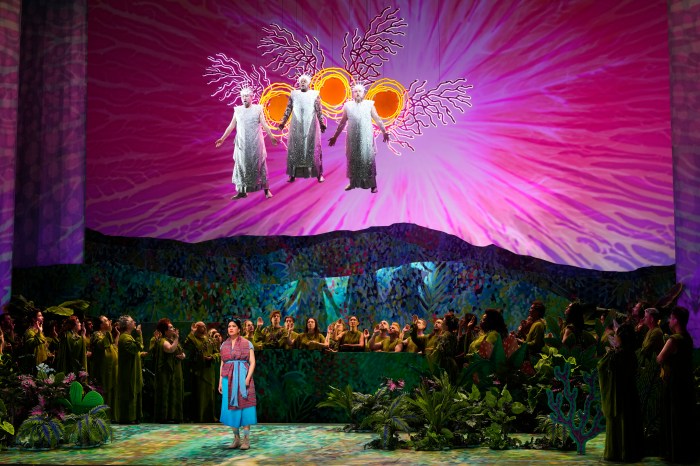“The Girl on the Train” is supermarket-level trash down to its essence, disposable nonsense packed with manipulations that surely will never be remembered as a great work of cinema.
And yet, as rendered on the big screen by director Tate Taylor in this adaptation of the Paula Hawkins bestseller, it plays far better than it probably should. It’s acted with great passion and helmed with steadfast commitment to a glossy psychologized aesthetic that keeps the entertainment value persistently high, even as your smarter self recognizes it for what it is.
The story contorts into some serious knots in a series of misdirection plays, so far be it from me to ruin any of the surprises for those potential audience members not among the millions to have read the novel.
In its most basic form, it concerns Rachel (Emily Blunt), a Westchester-to-Manhattan commuter (the book is set in England) who is fascinated by and obsessed with her imaginary sense of the lives of a woman named Megan (Haley Bennett) and her husband Scott (Luke Evans), whom she observes daily at their home adjacent to the train tracks.
These figures that inflame Rachel’s mind happen to also live next door to her ex-husband Tom (Justin Theroux), dwelling in the house he and Rachel bought and decorated, now with his new wife Anna (Rebecca Ferguson) and their baby.
The narrative, as adapted by screenwriter Erin Cressida Wilson, weaves together the stories of the three women by journeying from one perspective to the next and skipping through time, intermingling truth and fiction in a hopelessly complicated fashion. For most of the movie, it’s all-but-impossible to make sense of what’s actually happening, which in fact effectively illustrates Rachel’s increasingly confused and desperate state as a mystery that shall remain unexplored here develops.
The film sports a compelling vision of suffering and despair in glossy suburbs in the dead of the winter; Taylor effectively charges the atmosphere to such an extent through hyper-sexualized imagery and glum wealth porn, that the movie is never boring. Blunt, one of the best actresses around and yet also consistently underrated, performs the hell out of the part, earning your emotional engagement by remaining rooted to the painful past at the center of her character even when she’s forced to launch into the sort of hysterics that might have overwhelmed a lesser talent.
Much like its recent close cousin “Gone Girl,” adapted in a similarly highfalutin fashion by David Fincher, “The Girl on the Train” proudly embraces its melodramatic essence. It doesn’t offer anything in the way of lasting impact and it’s overwritten and overbaked to such an extent that even the world’s most adept filmmaker would ultimately be forced to surrender to the meaningless stupidity. But, of course, trash can be art, too, if it’s made with just the right degree of conviction.

















